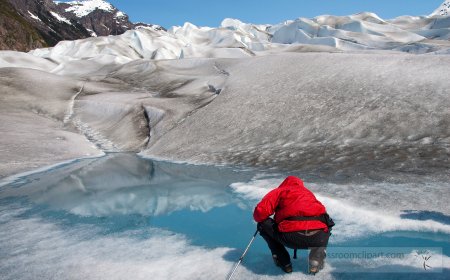Igneous Rocks for Students | Earth Science Guide
Learn about igneous rocks formed from cooled magma or lava discover intrusive and extrusive types with examples properties and the rock cycle in earth science

🌟 Introduction
Igneous rocks are some of Earth's oldest and most important rocks. They form when hot molten rock, called magma inside the Earth or lava on the surface, cools and solidifies. Igneous rocks make up much of Earth's crust and provide valuable materials used in building, technology, and even art. These rocks come in two main types: intrusive (plutonic), which cool slowly underground, and extrusive (volcanic), which cool quickly at the surface. Their textures, colors, and mineral crystals depend on how fast they cooled. Studying igneous rocks helps scientists understand Earth's interior, volcanoes, and the rock cycle.
🔍 What are Igneous Rocks?
Igneous rocks form when melted rock cools and hardens.
-
Intrusive Igneous Rocks: Formed from magma cooling slowly inside Earth, giving them large crystals. Example: granite.
-
Extrusive Igneous Rocks: Formed from lava cooling quickly on the surface, giving them small crystals or glassy textures. Example: basalt, obsidian, pumice.
🌍 Why are Igneous Rocks Important?
-
Earth's Foundation: They make up much of Earth's crust.
-
Resources: Provide granite for buildings, pumice for cleaning, and obsidian for tools.
-
Clues to Earth's Interior: Crystal size and composition reveal how and where they formed.
-
Part of the Rock Cycle: Igneous rocks break down to form sediments and can change into metamorphic rocks.
🧪 Everyday Examples
-
Granite is used for countertops, buildings, and monuments.
-
Basalt forms much of the ocean floor and volcanic islands.
-
Obsidian, also called volcanic glass, was used by ancient people for sharp tools and weapons.
-
Pumice is used in beauty products and as a lightweight building material.
✨ Fun Facts
-
The word "igneous" comes from the Latin word for "fire."
-
Some igneous rocks cool so fast they have no crystals, like obsidian.
-
Pumice is the only rock that can float on water.
-
Large volcanic eruptions create vast fields of extrusive igneous rocks.
📌 Key Takeaways
-
Igneous rocks form from cooled magma or lava.
-
They are divided into intrusive (slow cooling) and extrusive (fast cooling).
-
Examples include granite, basalt, pumice, and obsidian.
-
They are important for Earth's crust, resources, and geology.
🐾 Kid-Friendly Summary
Igneous rocks are "fire-made rocks" that form from cooled magma or lava. Some are smooth and glassy, others are full of crystals, and they build Earth's crust.
📚 Vocabulary Words
-
Igneous Rock: Rock formed from cooled magma or lava.
-
Magma: Molten rock beneath Earth's surface.
-
Lava: Molten rock that reaches Earth's surface.
-
Intrusive Rock: Igneous rock that cools slowly inside Earth.
-
Extrusive Rock: Igneous rock that cools quickly on the surface.
-
Granite: Common intrusive rock with large crystals.
-
Basalt: Common extrusive rock that makes up ocean floors.
-
Obsidian: Volcanic glass formed from lava cooling quickly.
-
Pumice: Light igneous rock with air holes that can float.
-
Rock Cycle: Natural process of rocks changing from one type to another.
🧠 Interactive Quiz on Igneous Rocks
- Igneous rocks form when
A. Sand is pressed into layers
B. Heat and pressure change rocks
C. Magma or lava cools
D. Plants and animals decay - Which rock is intrusive?
A. Basalt
B. Obsidian
C. Granite
D. Pumice - Which igneous rock can float on water?
A. Granite
B. Basalt
C. Obsidian
D. Pumice - Obsidian is also called
A. Volcanic glass
B. Fire crystal
C. Lava stone
D. Rock salt - Which igneous rock makes up most of the ocean floor?
A. Marble
B. Basalt
C. Sandstone
D. Shale
- Igneous rocks form when




















































